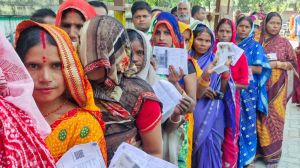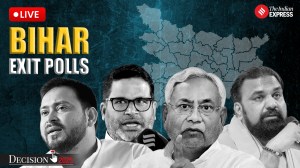BJP’s report card
For Atal Bihari Vajpayee, one year into his second stint, the news should have been like a dream come true. He had everything going for hi...

For Atal Bihari Vajpayee, one year into his second stint, the news should have been like a dream come true. He had everything going for him: triumphs on the foreign policy front; laurels on the liberalisation front; cool cruising with allies in a coalition comprising over two dozen parties; a hegemonic grip over his own party, and glory on the personality front. Yet the dream seems to be turning into a nightmare, the triumphs into tribulations and the cruising with the allies threatens to turn into a bruising, going by the behaviour of some.
Clearly, knees are the least of Vajpayee’s troubles right now. The party is knee-deep in trouble given the drubbing that it has received in its erstwhile strongholds, the latest of which was the panchayat and municipal election results in Gujarat. Equally disastrous has been its previous performance in local elections in Uttar Pradesh. With Mamata Bannerjee still sulking after her resignation from the Cabinet, the alliance in West Bengal could turn out to be a damp squib. The Shiv Sena is more than peeved in Maharashtra. Although the creation of the three new states Jharkhand, Uttaranchal and Chhattisgarh was a clever move politically, the reported rendezvous of the Samata-Janata Dal with Laloo Prasad Yadav in Bihar is far from good news for the BJP.
The simplest way to explain the disenchantment of the electorate with the party in power is the anti-incumbency phenomenon. But this does not explain why the ire with the incumbent surfaces at one time and not another.
Performance is the basic yardstick by which electorates all over the world judge elected representative governments. And, despite all the hype of e-governance, the BJP has miserably failed to perform wherever in power. The Keshubhai Patel government’s report card read like a string of failures: the poor handling of the devastating drought and violent water riots in the state, and the consequent loss of lives because of unprovoked police firing, and the attacks against minorities.
The VHP-inspired violence in Surat was, indeed, barbaric. Similarly disastrous has been the performance of the party in UP and equally macabre its tirade against minorities. With the shadow of assembly elections looming large, panicky senior party leaders in the state are busy calculating caste combinations and permutations. In the process, basic issues like development and governance have been given the short shrift.
For the Congress, the BJP’s lacklustre poll performance has come as a shot in the arm. But any glee over its victories in the local elections in Gujarat and Kerala is premature, as is its strategy to rope in Mamata in West Bengal. However, they need to remember two lessons: First, it is only in a two-party system that the losses of one party are the gains of another.
In a multi-party dispensation, the equation is not so simple. Unfortunately for them, India has a multi-party system. So, while the Congress might gain from the BJP’s loss in Gujarat, they are in no position to do so in UP. Second, given bad governance, public discontent is natural but unless the electorate clearly perceives an alternative, they are not ready to switch sides. Racked with fierce factionalism, a rudderless and practically leaderless Congress is today hardly in a position to provide an alternative.



- 01
- 02
- 03
- 04
- 05




























